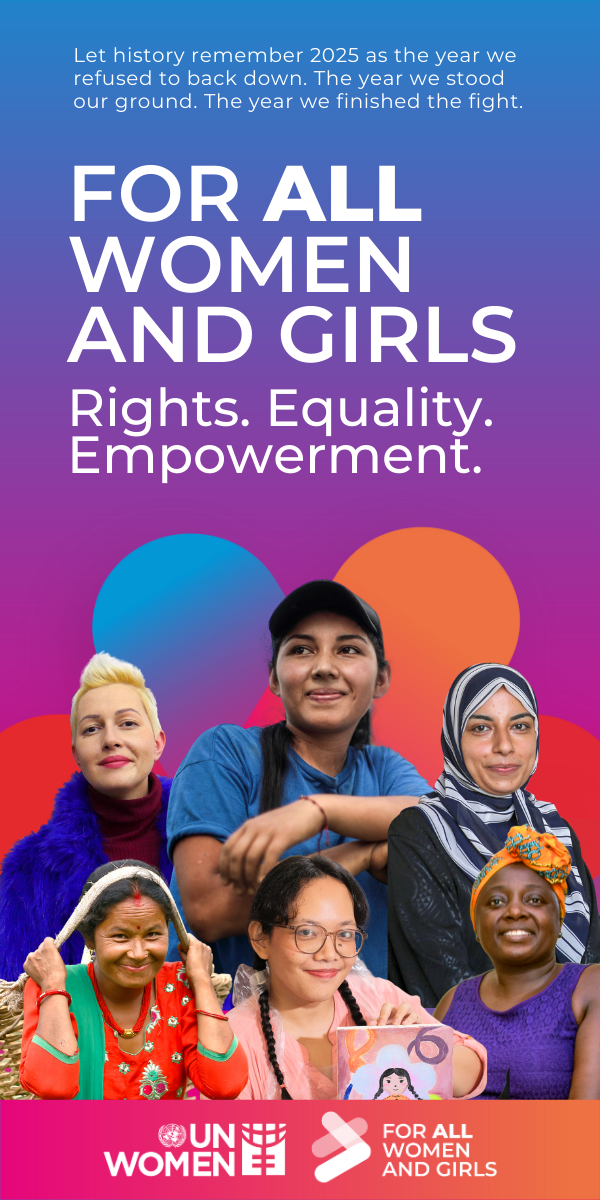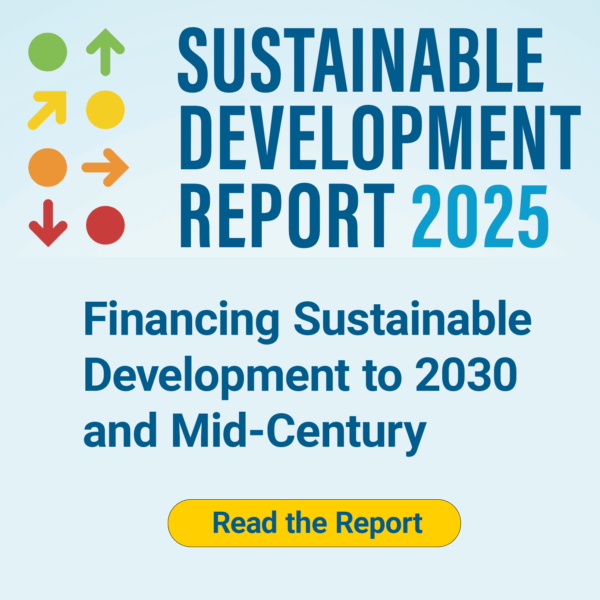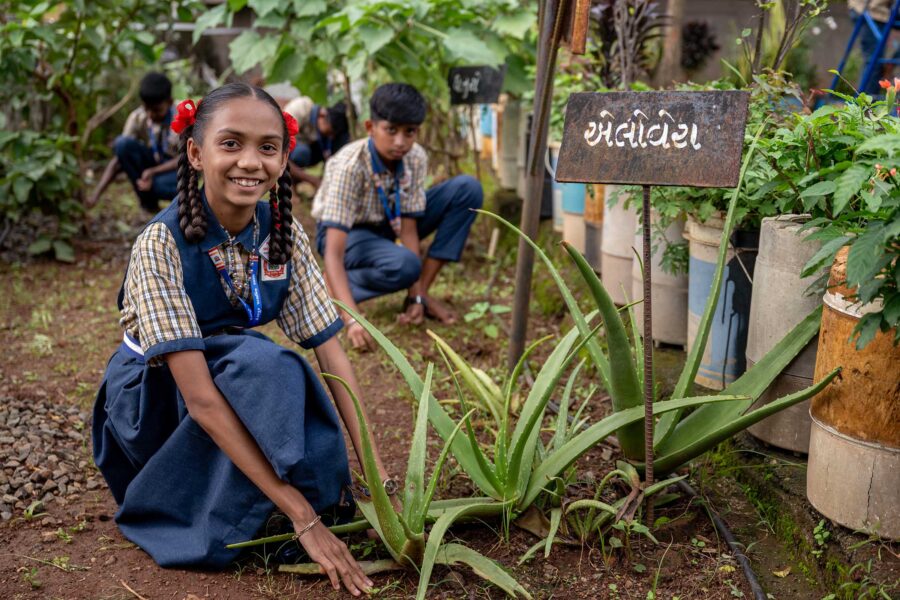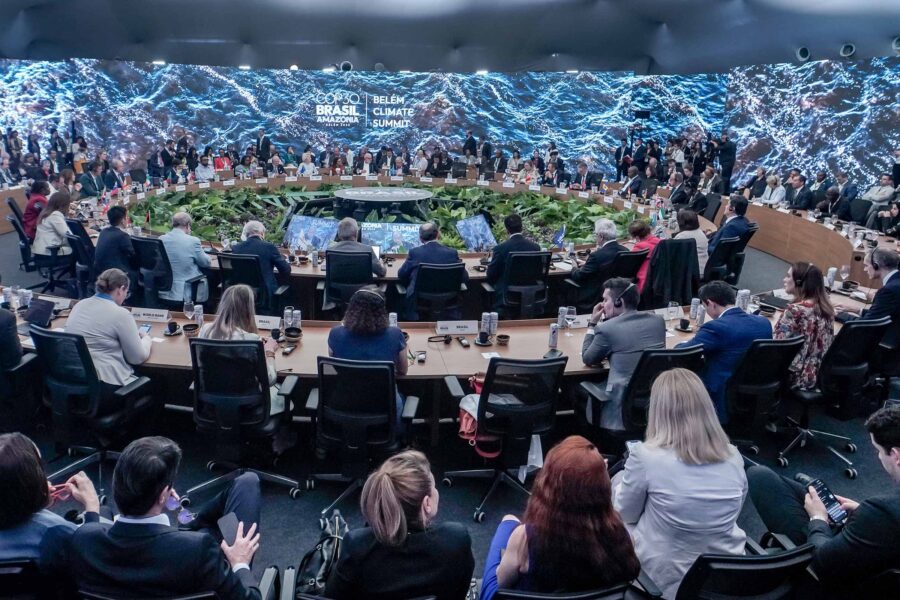How to create economic growth without carbon emissions and environmental damage
Our current state of economic development has been built on burning carbon. To achieve the SDGs, or even just retain what we have, that link needs to be broken – ‘decoupled’. The decoupling process has started but will need to be total
Energy — Global
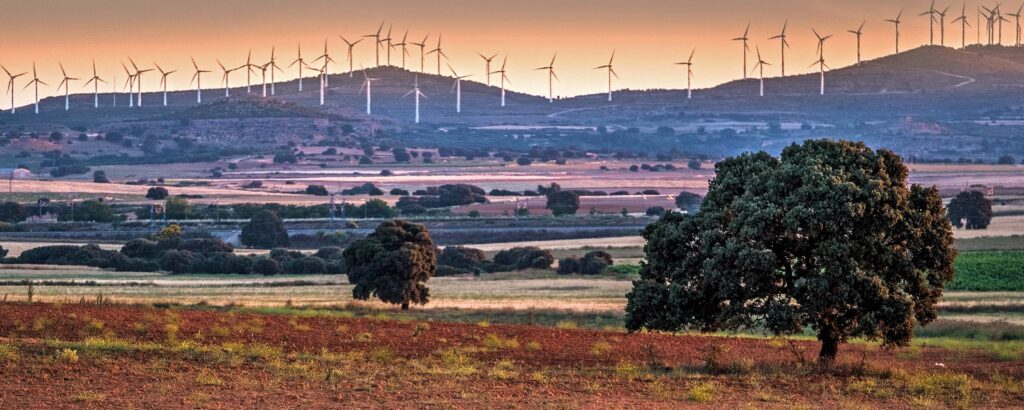
Transforming raw materials into productive output has driven the economic growth of developed countries, yet such unchecked expansion has left behind a trail of environmental harm. The golden question facing our societies today is how to continue expanding our economic goods while reducing the ensuing environmental bads. This is where decoupling comes in.
Our socio-economic systems continuously require materials and energy for human activity, agriculture and livestock, and manufactured goods, all of which lead to emissions of greenhouse gases (GHGs), air and water pollutants, and waste. “Decoupling” refers to de-linking our resource-hungry economic activity from environmental pressures, which can follow two paths:
- decoupling GDP growth from the resources it requires, such as energy and material use
- decoupling GDP growth from its impacts down the line, such as GHG emissions, air pollutants, and waste, which have direct impacts on human well-being
We saw two big paradigm shifts in the 20th century. First, a Keynesian focus on education and government spending, and then a neo-liberal emphasis on free markets. Now, we are entering the third paradigm shift, geared towards meeting the needs of every human being, current and future, and thus improving well-being in a sustainable way. The UN Sustainable Development Goals (SDGs) list 17 interlinked global targets to guide global growth and development onto a sustainable path, and track our progress along the way. Eleven of the SDGs are environment related.
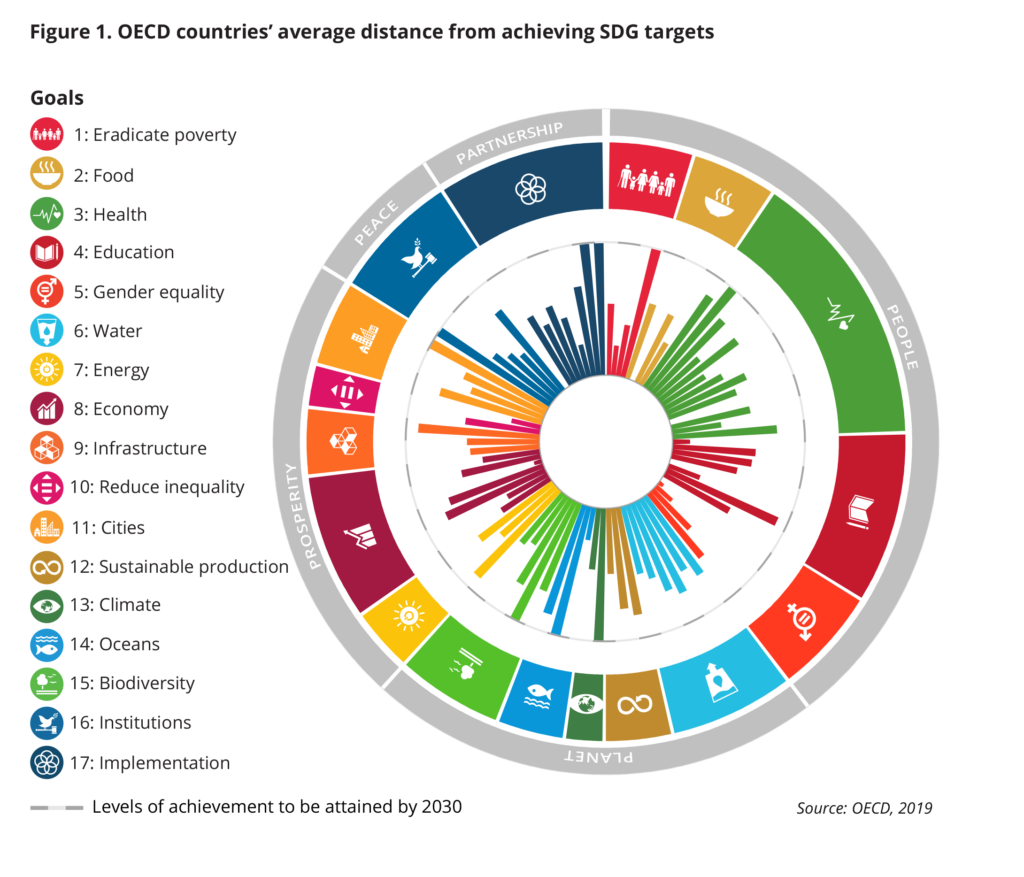
Figure 1 shows how far OECD countries (on average) are from achieving each target for which data are available. The longer the bars, the shorter the distance to be travelled by 2030. Target levels are represented by the outer dotted circle. The inner circle (the starting point for the bars) represents a score of three or more standardised distances away from target, which most OECD countries have achieved on most targets. Targets are shown by goal, and goals are clustered by the “5Ps” of the 2030 Agenda (people, prosperity, planet, partnership, and peace).
The idea of decoupling environmental pressures from economic growth – one of the main objectives of the OECD Environmental Strategy for the First Decade of the 21st Century – is to implement structural changes to create a more sustainable economy that can stand the test of time, outgrowing itself and its own impacts. The evidence base provided by the OECD complements the SDGs and helps shed light on the extent of resource and impact decoupling achieved thus far. It highlights what remains to be done globally to continue on the trajectory towards sustainable development.
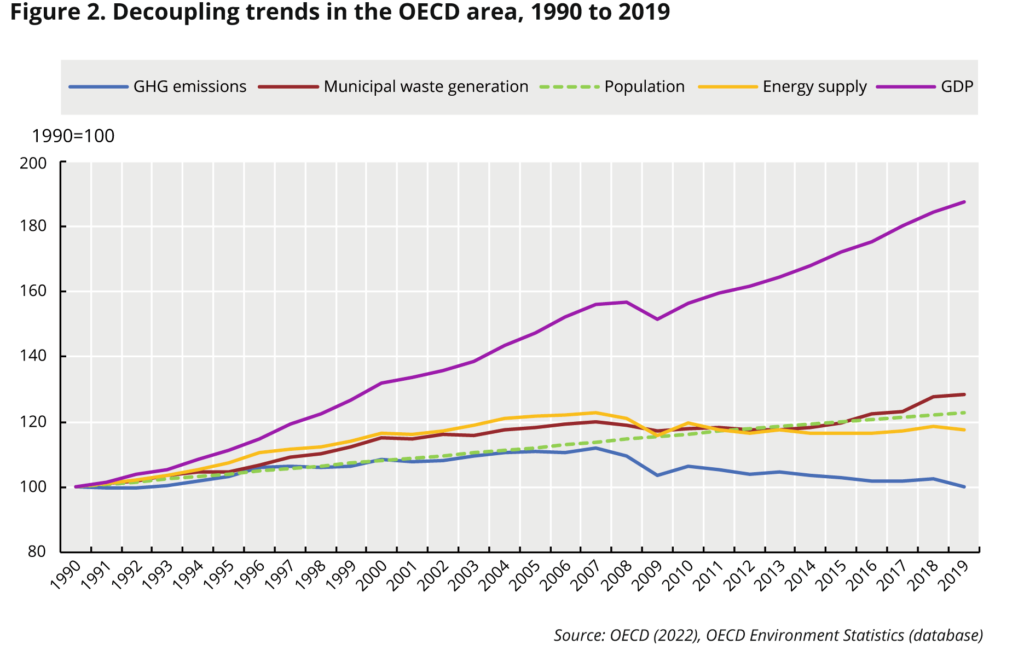
Experience in the OECD area over the past three decades shows us that decoupling GHG emissions from economic growth is not only possible, but well on its way. In Figure 2, if we compare the growing purple line of GDP with the blue line representing GHG emissions, we can see how the growth of emissions was on a slower path than GDP growth, indicating relative decoupling, until 2008. Then, emissions growth began to decrease, achieving absolute decoupling.
The reasons behind this welcome development are twofold:
- energy efficiency has improved, meaning our activities require less energy than they used to
- we have begun to significantly substitute GHG-emitting fossil fuels with renewable fuels
Both these factors have been at play, proof of which is the decreasing energy supply – around the time that emissions did so too – as well as the simultaneous increase in the share of renewables in the total energy supply, matched with a sharp decrease in coal production from 2010 onwards.
As for waste, the past three decades have seen a relative decoupling, with municipal waste generation continuing to increase as our societies grow, albeit at a slower rhythm. Nonetheless, from 2016 onwards, waste generation has increased faster than population growth, being a source of concern to be aware of. Here, the same story applies as with emissions: decoupling can be achieved through higher efficiency in our material consumption and generation of waste, and through better substitution of non-renewable products with renewable products, by recycling. Absolute decoupling of waste generation from GDP growth is yet to become a reality, as there is both a degree of higher efficiency and higher substitution that can be built upon. For this, recourse to the measurable milestones set out by the SDGs, and the sharing of mutual learning, is essential.
There are many lessons to draw upon from the past three decades. A good place to gather practical lessons learned, monitor global progress, and sort through headline noise is the International Programme for Action on Climate (IPAC). IPAC was launched in May 2021 to support progress towards a more sustainable economy by 2050, and helps countries to measure progress towards meeting their climate goals, while taking into account their respective capabilities and national circumstances. For instance, price signals have been instrumental in leading the way for the substitution of fossil energy and the decoupling of emissions from economic growth. The Climate Action Dashboard tracks climate-related tax revenue, effective carbon rates, and climate policy stringency – all essential in driving investment patterns towards climate neutrality.
There is also scope for applying the learned experience from the successfully decoupled energy emissions to the system of price incentives of waste – for example, to accelerate recycling. For this, IPAC’s Climate Policies in Practice platform encourages mutual learning by offering practical policy examples across various sectors and government levels, with the ultimate goal to inspire policymakers, business, and civil society to take action to move us towards a net-zero world. This is complemented by country notes, which provide insight into a country’s situation with a sub-national lens, and targeted advice on selected policy areas, given the diverse array of approaches, circumstances, and starting points across and within countries.
For example, Ireland is following a credible tax trajectory, gradually increasing its carbon tax to reach €100 per tonne of carbon dioxide by 2030. The country is extending the tax’s scope to all fuels used in sectors not covered by the EU Emissions Trading System. This will help reduce Ireland’s GHG emissions in line with SDG 13 and improve clean and affordable energy in line with SDG 7, thanks to revenue recycling and clean energy financing. To tackle SDGs 7, 13, and 17 (on partnerships for implementation), Australia’s Clean Energy Finance Corporation is pioneering green banking, with the purpose of scaling up investment in clean energy projects. Lithuania’s law on alternative fuels, adopted in March 2021, additionally tackles SDG 11 on sustainable cities and communities, and SDG 12 on responsible consumption and production. The law facilitates a green shift in the transport sector by increasing the number of electric vehicles and charging stations, and expanding the use of cleaner fuels. Examples such as these, and many more, filtered by sector, SDG, country, and sub-national level, can be found under IPAC’s Policies in Practice.
IPAC is part of a wider OECD effort to support the SDG Agenda through its experience of harnessing data and indicators to place climate change in the broader context of sustainable development. Coming back to the key policy levers responsible for bringing about emissions decoupling, the OECD produces an Inventory of Support Measures for Fossil Fuels, which identifies and quantifies public financial flows benefiting fossil fuel production and consumption. The inventory directly supports SDG indicator 12.c.1, “Amount of fossil-fuel subsidies per unit of GDP (production and consumption),” providing the methodological support, monitoring, and reporting capacity for the 50 economies covered in the inventory. The inventory also responds to the commitment to end fossil-fuel subsidies, now anchored in the UN process.
If we are serious about reaching our climate and sustainability targets while meeting the needs of every person – present and future – absolute decoupling of economic growth from its use of resources and its emission of environmental bads is a logical necessity. True growth considers not only the short term, but also the medium and long term. That means we must track not only GDP but also measures of sustainability. The need for sustainability in our systems becomes more apparent than ever in the face of price and geopolitical volatility, against which decoupling can ensure a degree of stability. Decoupling can therefore also provide stability in economic growth, underlying the well-being of our societies.

